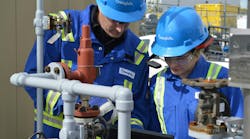The fabric filter segment will grow at a faster rate than the other segments over the next decade, McIlvaine says. Within this segment the sales of membrane media will grow faster than other options. The precipitator segment will grow at the lowest rate.
Industrial plants in the U.S. will be spending over $1 billion per year over each of the next four years to comply with toxic air pollution control standards for their boilers, kilns and incinerators. The biggest investments will be in fabric filters and continuous emissions monitors.
Sales of chemicals for the purposes of air pollution control will exceed $13.8 billion. Twenty-five percent of this market will be in the U.S. purchases of activated carbon and bromine will grow at double-digit rates over the next five years. Ammonia DeNOx purchases are presently $1.5 billion in the U.S. and $6 billion worldwide. Lime usage will grow robustly as power plants address the new U.S. air toxic rules.
A big potential use of lime is for inhibited oxidation wet scrubbing systems. The purchases will be driven by the ability of the chemically fixed waste product to encapsulate toxic metals. This is one of the most economical ways to ensure that an air pollution problem does not turn into a water pollution problem, McIlvaine says.
One of the biggest variables in the size of the future market is the price and availability of natural and non-conventional gas. However, it is the perception of future prices rather than the accurate prediction of them, which will most affect the markets.
If the perception is that gas prices will remain low, then there will be large numbers of gas turbine power plants, LNG export facilities and gas-to-liquids plants built. This will cause the price of gas to soar. If, on the other hand investors fear a return to high gas prices, they will not invest in gas consuming facilities and this will cause the price of gas to remain low.
The 90-minute recording of the presentation and the printed presentation are available from the McIlvaine Company. Click here for more information.



